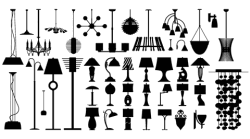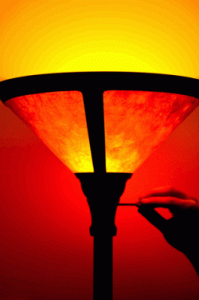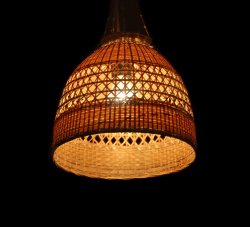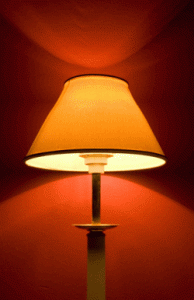Lamp Design: Table, Desk and Floor Lamp Styles
Lamp design provides both quality light sources and attractive fixtures.
Choosing the right lamp design is probably the most fun part of lighting design. While most lighting design is dedicated to considering only light paths, brightness and lighting quality, choosing lamps brings with it a lot of the fun of choosing furniture. Here you get the chance to really express your sense of style rather than simply illuminate your space.
Nonetheless, the usual principles of lighting design still apply and in some ways are even more important. Lamps, just like any other lighting fixture, provide illumination that can really throw off your overall lighting strategy if not done carefully. In this article, I will discuss what to look for in lighting design and how it can affect your room’s lighting quality.
There is no reason, though, that you can’t do both. Choosing the best lamp design is still fun and exciting. Whatever the features of the light quality that you want, there will be thousands of lamps that suit your sense of style.
Table Versus Floor Lamps

The variety of lamp designs is greater than in any other area of lighting design.
The most basic decision to make when choosing a lamp design is whether you want to use a table lamp or a floor lamp. I use the term “table lamp” loosely, referring to any portable lamp that rests on some surface other than on the floor. Each has its own lighting quality.
The bulbs in table lamps are usually lower than those in floor lamps, which affects their quality of light significantly. In general, they are slightly above the head of a seated person and slightly below the head of a standing person. This gives them the following properties:
- They are wonderful for lighting the faces of guests in rooms used for entertaining. Since guests’ faces are close to the shades, they can bring out faces while not overpowering the room.
- They make good reading lights only if you are sitting directly next to them and slightly below them.
- They don’t provide very good ambient lighting. Their light will have mostly dispersed before reaching the ceiling, leaving the sense of a dark space above if relied on too heavily.
- They are not especially flexible when it comes to placement, since they must be placed on surfaces.

Torchiere floor lamps shine light onto the ceiling, which then spreads around the room as ambient lighting.
Floor lamps, on the other hand, have a number of features that give them their own special lighting properties. Most of these are a result of their location, as the light source is higher, usually around even with people’s heads.
- They do not light the faces of seated people as well as table lamps, and may even cause harsh shadows if there is no shade between the light source and the faces of those people.
- They make excellent reading lights for sitting in chairs. Note that you have to be careful about the location of the bulb, so that shadows are not generated by the head of the reader. Don’t place a floor lamp directly behind a chair if you intend to use it as a reading lamp.
- They make for excellent ambient lighting, because the light from a floor lamp can easily reach the ceiling and other semi-reflective surfaces. Full-spectrum floor lamps will provide white light rather than the traditional reddish beams.
- They are more flexible in terms of placement, but you’ll generally want to place them close to a wall.
Of course, not all of these statements are true for all lamps. There are short wall lamps and tall table lamps. However, the difference in height is quite significant and really affects how they are used.
Lamp Shades
The next consideration when choosing a lamp design is the lamp shade. Lamp shades can radically alter the type of light that a lamp produces. This is actually quite a good thing for choosing a beautiful lamp. Since it is really the shade that affects the kind of light that is produced, very different functions can be served by lamps of similar styles but with slightly different shades. In this section, I will discuss the kinds of effects that shades can have.
Light Diffusion
Light is considered “diffuse” when it is shone through some sort of translucent material. This breaks up the beams of light and actually changes the light’s quality. A direct beam of light will cast strong shadows, but diffuse light will cast almost no shadows at all. Further, a direct beam of light will be harsh on the eyes, while a diffuse light can be looked at directly or almost directly. Fabrics including the silk common in ginger jar lamps will all have this diffusing effect.

A wicker shade like this one will diffuse the light that goes through the wicker, leave some glare through its holes, and create patterns of light on nearby walls.
Diffusion can also affect the color of the light that is produced by your lamp. The light that is produced through a shade will take on some of the color of that shade. As a result, the usual rules for light color apply to lamp shades. Reddish and orange shades are good for lighting faces. Blue and green shades are good for lighting foliage. White shades will bring out whatever color objects naturally have. Unfortunately, this means lamp designs like green reading lamps are almost never a good idea, because they will make anyone lit by them look sickly.
Depending on how thick the shade of your lamp is, the light produced by the lamp will be more or less diffuse. If you have a shade that goes around the entire light source, all of the light will be made diffuse. Opaque shades don’t diffuse light at all, but simply block it, producing only beams. For example, some Lenox lamps use opaque, ceramic shades. Most lamp shades don’t cover the entire light source, and so beams of light are produced in those gaps.
Beams
An important thing to consider in a lamp design is what to do with the beams of light mentioned above. Aside from those shades that cover an entire light source, all lamp shades will produce beams of light. These beams can serve a number of different functions, depending on where they are located.
Upward beams of floor lamps can be used to provide general ambient lighting. The light from the light source is reflected off of the ceiling and then spreads around the room. When it reflects, this light becomes diffuse, providing a general light that casts few shadows and seems to come from no particular direction. Some lamps, such as mission-style lamps do not cast upward beams.
Downward beams of table and floor lamps can be used for reading, and the goal is to provide as much flexibility as possible for people wanting to read. Sometimes, reading lamps are placed so awkwardly that people basically need to put the book right on their laps in order to get proper lighting, something that will be impossible for people with weaker vision and will be uncomfortable for everyone else. Make sure the downward beam captures the entire seat of the chair and preferably at least one of the arm rests.
Perhaps the biggest concern from beams in lighting design is the creation of what are called “light objects”. Light objects are shapes of light that are generated when a light strikes a physical object. So, for example, the conical shape that appears on the wall behind a reading light is a light object, as is a movie projected on a wall.
Since most lamp design produces a beam of light from the top and most lamps are placed near walls, it is almost impossible to avoid light objects. So, the goal is to pick lamps that produce the kind of light objects that you want. Lamps with wider openings on the top will produce larger, conical objects, while lamps with narrower openings will produce almost beam-like stripes of light. Consider what objects you want on your walls and then choose appropriately. If you really don’t want light objects, pick a shade that does not have an opening on top, but such lamps can be rare.
Putting It All Together
Lamp design is one of the most exciting parts of lighting design. Before choosing a lamp, there are a number of things to consider:
- Do you want a table or floor lamp? Each has its own lighting quality due to its height.
- What level of diffusion do you want from your lamp shade? Do you want your light changed to a certain color?
- Beams of light can produce ambient lighting, reading lighting and light objects, depending on the shape of lamp shade you choose.
With these lighting-quality considerations in mind, you’ll now be better prepared to choose a lamp design that fits both your style and your needs.
More Lamp Articles:
Mission Style Lamps: Bring the Arts and Crafts Movement to Your Home
Mission style lamps are inspired by the Arts and Crafts Movement of the turn of the Twentieth Century.
Lenox Lamps: Ceramic and Fine Bone China Lamps
Lenox lamps bring the elegance and sophistication of ceramic art to your lighting design.
Ginger Jar Lamps: Integrating and Enjoying Asian Lamp Design
Ginger jar lamps provide beautiful Asian painting and a unique style of shade for sculpting your light objects.
Full Spectrum Floor Lamps: Integrating White Light
Full spectrum floor lamps provide quality task light.
